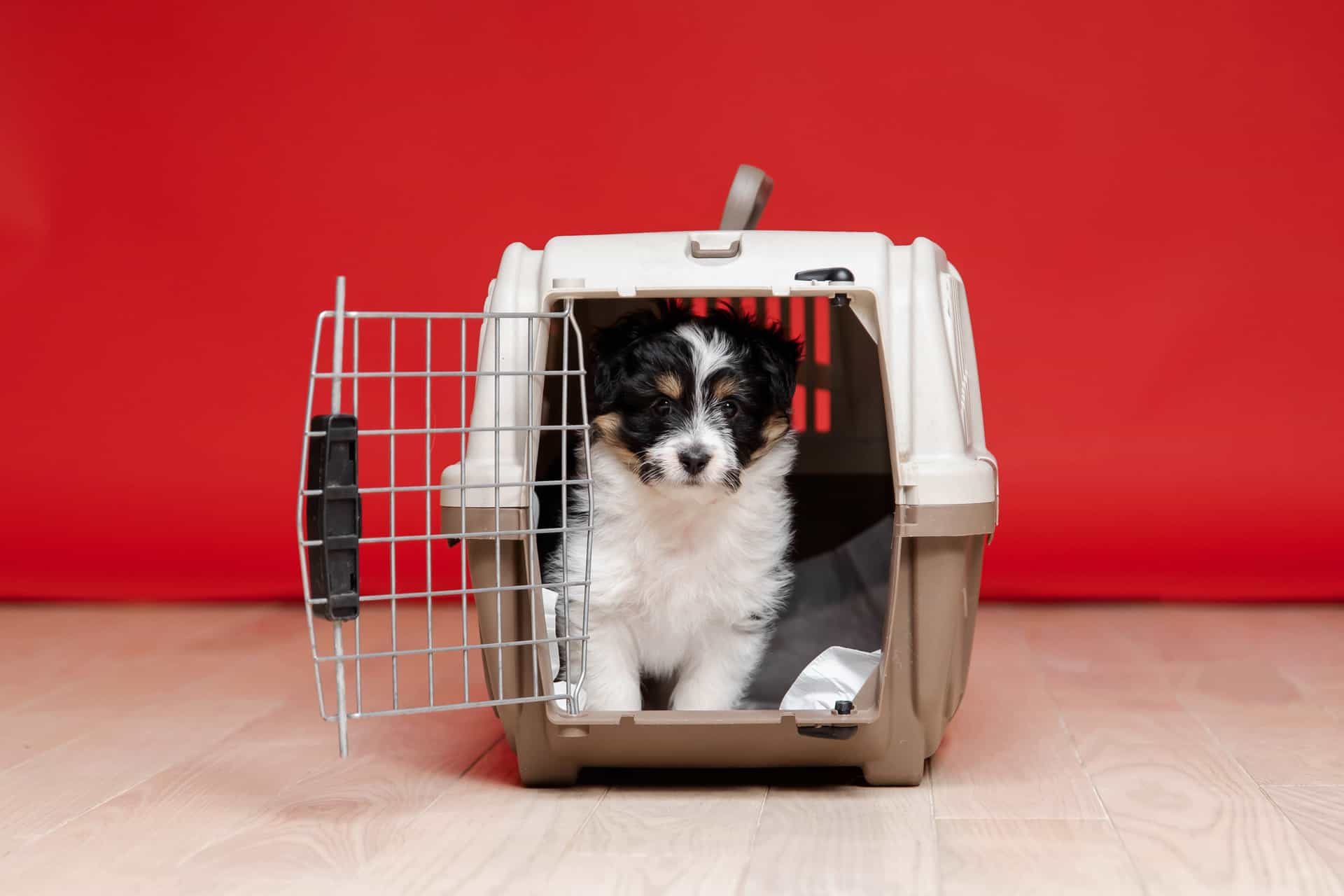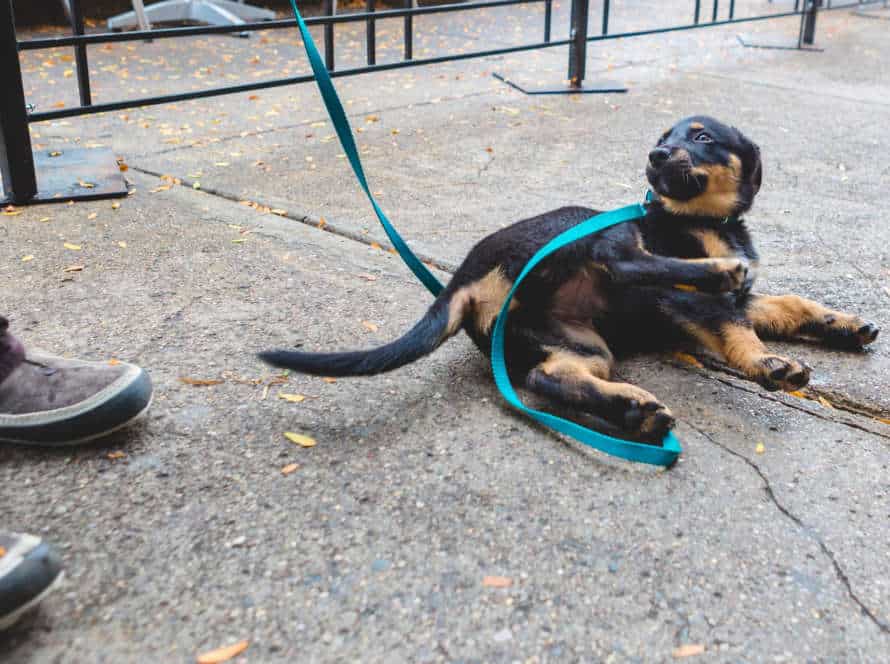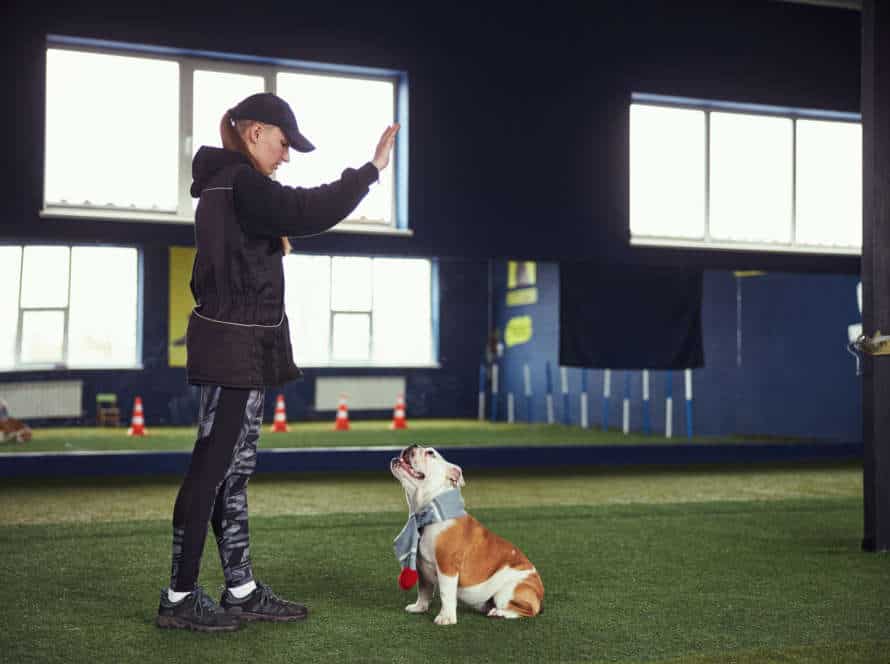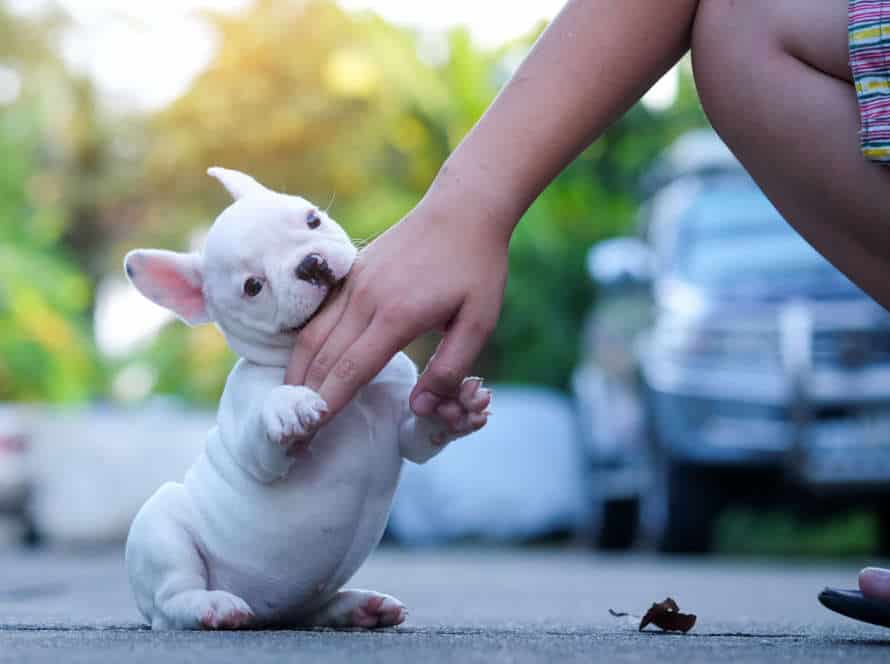Understanding Crate Training for Multiple Dogs
Crate training multiple dogs? It’s a great idea! It keeps your pups settled and secure while you’re away. Plus, it helps teach good house behavior. It also gives them a secure space to relax. However, it depends on how many dogs you have and their individual personalities. Different approaches to crate training might be right for you. Let’s explore!
Why crate training is beneficial for multiple dogs
Crate training is great for bettering the behavior and relationship of multiple pooches in one home. Here are a few of its advantages:
- Offers safety: Crate training gives each pup their own private space which makes them feel safer and reduces aggression or unease between them.
- Sleep: It can help create a regular sleeping pattern which is so important for their health.
- Independence: It allows them to have time on their own, vital for their mental well-being and prevents separation anxiety.
- Travel and trips to the vet: If they’re crate trained, they’ll be more relaxed when going away or to the vet.
Remember to introduce training little by little plus give positive reinforcement and you’ll have a more obedient pup family.
Factors to consider before starting crate training
Crate training can be a great method for introducing multiple pooches into your house. But, there are several things to consider before starting.
- Firstly, assess your dogs’ personalities and temperaments. Some may be more tense or scared of small spaces and may not take kindly to the crate.
- Secondly, pick the perfect size for the crate. It should be large enough for them to stand, turn and lie down comfortably.
- Thirdly, make a positive association with the crate. Give treats, toys, and praise when they go close.
- Fourth, slowly introduce them to the crate. Leave the door open and let them explore it in their own way.
- Finally, keep an eye on them during training. Make sure they aren’t too anxious or stressed.
By following these steps, you can make sure crate training is a positive experience for both you and your dogs.
How to choose the right crate for multiple dogs
When finding the perfect crate for multiple pups, take into account size, sturdiness and materials. Here’s how to do it:
- Size: Measure your dogs’ height, length and weight to find a crate that allows them to stand, sit, turn around and lie down comfortably.
- Durability: Choose a crate that is strong enough to handle the weight and activity of your dogs. Opt for metal or heavy-duty plastic.
- Materials: Pick a crate made from non-toxic and non-allergenic materials to keep your doggos safe. Avoid thin plastic that breaks easily.
When crate training your fur babies, give them their own separate space. They may whine and bark at first, but stay consistent with training for best results.
Pro tip: Get a crate with a divider so both dogs can share, yet have their own space.
Introducing Crate Training to Multiple Dogs
Crate training multiple dogs? Daunting. Yes! But success is achievable! Strategies and patience are key. Get guidance, stay consistent. Then, crate training can be a success.
What to expect? Let’s find out!
Getting each dog familiar with the crate
Introducing crate training to multiple dogs can be tricky. But, with patience and consistency, it’s doable to get each pup acquainted with the crate. Here are a few tips to make it easier:
- Choose a crate that’s big enough for all your pups to stand, turn around, and lie down in.
- Put the crate in a peaceful, low-traffic area in your home. Encourage the dogs to explore it by putting treats, toys, or bedding inside.
- Let the dogs get familiar with the crate slowly. Start with short periods of time with the door open, then increase the amount of time and close the door for a bit.
- Remember each dog’s temperament, age, and behaviour when crate training. Be patient – some pooches may take longer to feel comfy with the crate than others.
Starting crate training with individual dogs
Introducing crate training to multiple dogs takes patience and consistency. Here are some tips:
- Start off slow. Let each dog explore the crate without forcing them inside.
- Use treats and verbal praise to encourage them to enter the crate.
- Place the crates in different areas of the room for each dog’s privacy.
- Always supervise your dogs when in the crates and don’t leave them unattended for long.
- Be consistent with the training, rewarding good behavior and redirecting negative behavior.
- With time and consistency, your dogs will learn to love their crates and view them as a safe and comfy space.
Introducing multiple dogs to crate training together
Introducing multiple dogs to crate training can be tricky! But, with the right approach and patience, your pups will learn to love it. Here are some tips:
- Get a big enough crate for all your doggos.
- Introduce the crate gradually. Use positive reinforcement and reward your fur-friends for entering it.
- Start by crate training one pup at a time.
- Train each one separately before attempting to train them together in the crate.
- Use treats and toys to make the experience positive.
- Be patient. It may take time for them to get used to the crate and being close to each other.
With time and consistency, they’ll learn to love their crate. Pro tip: Monitor their behaviors while training multiple pups in the crate. Give them a treat and a playful pat to encourage good behavior.
Maintaining Successful Crate Training for Multiple Dogs
Training multiple dogs in crates can be tough! There are different personalities and needs to consider. But – it can be done successfully. This section gives details on how to make sure it works. Follow these steps and you’ll have successful crate training for multiple dogs.
- Choose the right crate size: It is important to have the right-sized crate for each dog. It should be large enough for them to stand up, move around, and lie down comfortably but not too big that they can use one side for sleeping and the other for eliminating wastes.
- Assign each dog his/her own crate: Every dog should have his/her own crate, which they will use for sleeping and relaxation. This gives them a sense of security and comfort, like their own personal space.
- Make the crate a positive experience: Crate training should be comfortable and positive for your dogs. You can achieve this by treating them when they enter the crate, playing calming music, using comfortable bedding material or by putting their favorite toys.
- Give each dog equal attention: It is important to ensure that each dog receives an equal amount of love and attention from you. They should not be crated for long periods or feel neglected. Spending quality time with each dog can help in this regard.
- Stick to a regular feeding and potty schedule: Establishing a regular schedule for meals, water intake, and potty breaks can make crate training easier. This helps you monitor their eating habits and bowel movements.
Establishing a consistent schedule for crate training
Creating a regular schedule is essential when crate training multiple dogs. This helps them get used to the daily routine and structure, leading to a better crate training experience. Here are some advice to make a consistent plan for crate training multiple dogs:
- Set a feeding time and don’t stray from it.
- Organize regular exercise and playtime for the dogs so that they’re relaxed when it’s time to go in the crate.
- Adapt the crate-time length based on their age, size and personality.
- Consistency is crucial when crate training multiple dogs. This makes sure your dogs trust you, your leadership and the plan you’ve made.
Addressing behavioral issues during crate training
Crate training is an effective method for training many dogs. However, it can also lead to behavioral problems. Here’s what you can do to handle them:
- Anxiety: If your dogs are anxious, like constant barking, panting, or pacing, make the crate more inviting with a bed, toys, and treats. Start crate training by slowly increasing the time your dogs stay in there and reward them for good behavior.
- Aggression: When your dogs become aggressive in the crate, separate them into each one. Then work on positive reinforcement with one at a time. Once they can do crate training individually, reintroduce them to the same crate with supervision.
- Refusal to enter: If your dogs won’t enter the crate, try luring them in with treats, toys, or a favorite blanket. Encourage them to go in by themselves and reward them when they do.
Remember, each dog has different needs and personalities, so be patient and change up your training methods as necessary for success.
Providing adequate exercise and playtime outside of the crate
Crate training can be a great way to handle multiple dogs. But, it’s essential to give them enough physical and mental stimulation away from the crate. Here are some tips to help you:
- Go on a walk or run with them every day to keep them active.
- Schedule some playtime with each dog, to form a connection and stop any envy.
- Provide them with puzzle toys and chews while they’re in their crates.
- The crate should be roomy and cosy, with clean bedding and water.
- Create a routine and make sure your dogs get enough exercise and socialization. This will help crate training run smoothly and keep a multi-dog house peaceful.
Troubleshooting Common Problems with Crate Training for Multiple Dogs
Crate training many pooches needs patience and understanding. It’s not always a simple task. With some extra effort and knowledge, though, it can be a success! In this section, we’ll talk about some common problems with crate training multiple dogs, and how to deal with them.
Separation anxiety and distress during crate training
Separation anxiety and distress can be common when crate training multiple dogs. Dogs are social animals, so being separated from their owners or packmates can cause them to feel anxious. Crate training multiple dogs can be difficult, but there are ways to reduce their distress.
Start by introducing the crate slowly with positive associations. Give each dog their own crate, rather than having them share. Let them each adjust to the crate one at a time. Provide them with their toys, bedding, and a treat or two to keep them occupied while in the crate. Gradually increase the amount of time they spend in the crate, making sure they get ample exercise and playtime away from it. If the anxiety persists, seek help from a dog trainer or behaviorist.
Crate training may take some time and effort, but it is a beneficial tool for keeping your dogs safe and well-trained.
Crate-related aggression and dominance issues
Crate-related aggression and dominance problems can happen when crate training more than one dog. These can be due to competition for resources, space, or attention in the crate. To try and fix these common issues, use these tips:
- Give each dog their own crate: This will stop territorial aggression.
- Make a feeding routine: Feed each pup together, in a different spot, and in their own crate. This sets up a pattern and reduces competition for resources.
- Don’t overcrowd: Make sure each crate is right-sized for your pup. It should have enough space for them to stand, turn around, and lay down comfortably.
- Promote positive reinforcement: Praise and reward peaceful behavior, and discourage any sign of aggression or competition.
Following these tips will make sure you and your furry friends have a successful, low-stress crate training experience. Pro Tip: Introduce crate training slowly and positively to avoid potential problems.
Dogs not wanting to share a crate or claiming a crate as their own
Dogs can be reluctant to share a crate. Here’s what to do to fix this:
- Get multiple crates: Get crates suited to each dog’s size and needs.
- Make it fun: Use treats, toys and praise to make the crate a happy place.
- Introduce gradually: Start with one dog in the crate, then increase the time they share it.
- Supervise: Monitor them to prevent aggression and reward good behavior.
- Be patient: With consistent training, your dogs will adjust to sharing a crate and have a peaceful environment.
Gradually Decreasing Dependence on Crates for Multiple Dogs
Crate training for various doggos? Challenging and rewarding! It can lead to more independent, better behaved pups. Reduce crate dependence gradually.
Here’s the process for successfully crate training numerous dogs. Read on to learn more!
Ensuring that each dog is comfortable spending time outside of the crate
Crate-train your pups to make them comfy when they’re not in the crate. But, it’s key to gradually reduce their reliance on the crate to keep ’em content and jolly. Here are some tricks to try:
- Train ’em separately – no competition!
- Gradually up the time each pup spends out of the crate until they’re happy outside it for extended periods.
- Reward ’em for good behavior like obedience and calmness when they’re out of the crate.
- Give ’em comfort and safety when they’re out – like toys, treats, and a cozy bed.
- Then, little by little, reduce the time each pup spends in the crate until you don’t need it anymore.
Remember – crate-training should be done with positive reinforcement and lots of patience, so your furry friends feel safe and secure both inside and outside of the crate.
Gradually increasing the time that multiple dogs spend outside of the crate together
Increasing the time two or more dogs spend outside the crate together is an effective strategy to reduce reliance on crates. Training needs attention to the dogs’ behavior; here’s what to do:
- Put different crates in near rooms.
- Begin by putting each dog in its crate with the door open while they are eating or chilled, yet close to the other.
- When you feel sure that both dogs are okay being crated next to the other, start gradually increasing their time outside the crate together.
- Supervise their activities carefully during this process and be ready to put them back in their crates if they act uncomfortable or aggressive.
- Slowly raising the time they spend outside the crate will help you teach multiple dogs to be comfortable with one another and decrease their need for crates.
Providing alternative safe spaces for multiple dogs outside of the crate.
Crates can be helpful for training multiple dogs, but it’s also important to give them alternative safe spaces too. That way, they don’t depend on the crate so much, and can stay healthy, both physically and mentally. Here are some ideas:
- Get portable fencing or dog gates, and make play areas in your house or garden.
- Put comfortable beds, blankets, and toys in these areas.
- Use pheromone diffusers or calming sprays to help with relaxation.
- Use positive reinforcement to reward good behavior in these areas.
It’ll take time, but gradually decreasing their dependence on the crate will make them happier, healthier dogs in the long run.
Frequently Asked Questions
1. How do I start crate training multiple dogs at once?
Start by introducing each dog to their own crate and gradually getting them used to being in there by offering treats and positive reinforcement. It’s important to monitor their behavior and make sure they are comfortable and not anxious.
2. Is it possible to train multiple dogs at different rates?
Yes, each dog will have their own individual learning pace and some may catch on quicker than others. It’s important to be patient and consistent with each dog during the training process.
3. Can multiple dogs share a crate?
It’s not recommended for multiple dogs to share a crate as it can cause conflicts and stress. Each dog should have their own designated crate for sleeping and resting.
4. How long should I expect crate training to take?
The length of time it takes to crate train multiple dogs can vary based on the individual dog’s personality and learning pace. It’s important to be patient and consistent, and to never force a dog into a crate.
5. What should I do if one of the dogs is resistant to crate training?
If one of the dogs is resistant to crate training, it’s important to identify the root cause of their anxiety and work with a professional trainer to develop a customized training plan. Never force a dog into a crate as it can create negative associations with the crate.
6. What should I look for in a crate for multiple dogs?
The crate should be large enough for each dog to stand up, turn around, and lie down comfortably. It should also be sturdy and made of durable materials to withstand wear and tear from multiple dogs. Each crate should have its own bedding and water bowl.







